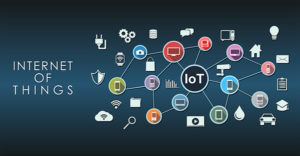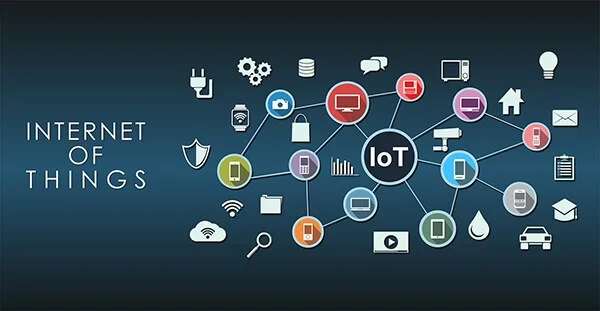
If you’re one of the many Americans who aren’t familiar with the phrase, “the Internet of Things,” it basically refers to our increasing line of products that collect and transmit data via the internet. Think smartphones, fitness trackers, smart thermostats, etc.
Once the stuff of sci-fi books and spy comics, gadgets of unsurpassed capabilities and convenience are now at our fingertips.
So how did the IoT get started, and where is it taking us?
Early IoT: Fantasy becomes reality
If you remember the old Dick Tracy comic strip, you were alive in the days when the Internet of Things settled its first roots in the imaginations and hopes of western citizens.
Just after WWII, a new world was awakening to new realities, and one of the icons of early smart technology appeared on the scene: Dick Tracy’s two-way wrist radio communicator, tucked discreetly in his watch. The first smartwatch.
In the 1960s, the radio watch received a significant upgrade — a miniature TV screen.
And we’ve never looked back.
Both the utility and, frankly, sheer coolness of connected devices drove creative individuals and companies to develop the early ancestors of today’s IoT. Their achievements include:
- The barcode (1949)
- ARPANET, an early internet predecessor (1969)
- RFID tags (1973)
- ATMs (1974)
- Wearable wireless webcams (1994)
Today’s IoT
Layering upon these strokes of genius, people created the technologies we enjoy today. In fact, for almost a decade now, we’ve had more objects connected to the internet than people connected to it.
Some of the most recognizable internet-connected devices today are:
- Smart home devices and apps that use simple voice or button commands to lock and unlock your doors, control lighting and temperature, water your grass, manage your baking, inventory and order your groceries, notify emergency services, record or stream security video, play music or audiobooks, and answer life’s toughest questions.
- Wearable devices like Fitbits, smartwatches, and smart jewelry can connect you to your phone, email, messaging services, fitness, sleep cycle, emotions, and even the female fertility cycle.
- Smartphones may or may not be true IoT devices, but they’re undeniably intertwined.
We’re currently enjoying new and improved personal and home IoT devices every year, but we’re also on the cusp of some revolutionary advances that will expand the platform and impact of the IoT.
Big things are coming.
Things that aim to virtually end car accidents, public transportation delays, and crop failure.
It’s estimated that by 2020 there will be 75 billion devices connected to the IoT. The market potential is unbelievable, and forecast to reach $267 billion by the same year!
-
- Smart cities are basically super connected locales that that utilize similar efficient data-gathering capabilities as smart home devices to become ever more sustainable, energy-efficient, economical, and even more user-friendly for citizens. The end goal is efficient public transport, improved ability to govern and allocate resources, and more efficient healthcare.
- Driverless car initiatives by companies like Google and Tesla aim to nearly eliminate car-related deaths. How badly do we need driverless, internet-connected vehicles? Well, 2016 was the deadliest year on American roads in a decade. Taking out the element of human error could save tens of thousands of lives, and $432 billion (from death, injury, and property damage) in one year in America alone.
- Smart farms could be the answer to the problem of feeding the estimated 9.6 billion people who may call the planet home in 2050. Governments, NGOs, and private corporations are putting their money on smart farm technology as our best bet at feeding everyone. The goal of smart farming is to help us read and respond intelligently to factors like loss of farmable land, freshwater shortages, and unpredictable weather changes.
To a smarter future
As we all embrace and change with our technology, Varay is here as a trusted partner to help keep you and your business secure.
Contact us today to set up a free, non-intrusive analysis to check for areas of vulnerability with your smart devices. We look forward to making all of your connections safe and secure.





